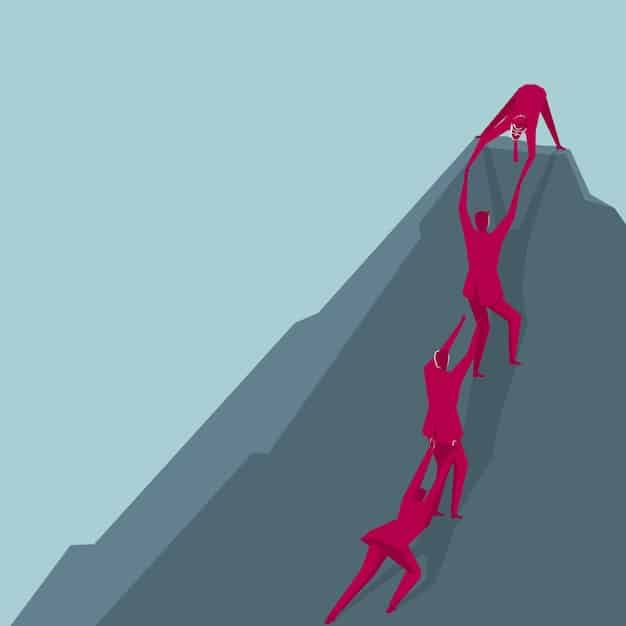Unleash Your Potential: Visualization Techniques for Success

The Power of Visualization involves using your imagination to create vivid mental images of your desired outcomes, helping you manifest goals and achieve success through enhanced focus, motivation, and positive mindset.
Unlock your potential and transform your life with the power of visualization. By harnessing your mind’s ability to create vivid mental images, you can actively shape your future and achieve your most ambitious goals.
Understanding the Power of Visualization
Visualization is a powerful technique that involves creating mental images to manifest desired outcomes. It’s more than just daydreaming; it’s about intentionally shaping your thoughts to align with your objectives.
By consistently visualizing your goals, you can significantly increase your motivation and focus, making it easier to overcome obstacles and achieve success. Think of it as a mental rehearsal that prepares you for real-life situations.
The Science Behind Visualization
Research shows that visualization can activate the same brain patterns as actual performance. This phenomenon, known as mental practice, can enhance motor skills and improve performance in various fields.
Benefits of Regular Visualization
Incorporating visualization into your daily routine provides numerous benefits, including reduced stress, increased confidence, and enhanced problem-solving abilities. It’s a tool that can transform your personal and professional life.
- Improved Focus: Directing mental energy towards specific goals.
- Increased Motivation: Building enthusiasm and determination.
- Reduced Stress: Replacing anxiety with positive mental imagery.
- Enhanced Confidence: Strengthening belief in your capabilities.
In essence, visualization allows you to experience success before it happens, making it more likely to materialize in reality. It’s a proactive approach to personal growth.
Setting Clear and Achievable Goals
Before diving into visualization techniques, it’s crucial to set clear, achievable goals. Ambiguous or unrealistic goals can hinder your progress and diminish the effectiveness of your efforts.
When defining your goals, make sure they are specific, measurable, achievable, relevant, and time-bound (SMART). This framework provides a structure that ensures clarity and direction.

The SMART Goal Framework
The SMART framework helps you break down your aspirations into manageable steps. Each element ensures that your goals are well-defined and attainable.
- Specific: Clearly define what you want to achieve.
- Measurable: Establish metrics to track progress.
- Achievable: Set realistic objectives within your capabilities.
- Relevant: Align goals with your overall values and priorities.
- Time-Bound: Set a deadline for completion.
Imagine you want to improve your public speaking skills. A SMART goal could be: ‘I will join a public speaking club and deliver a 5-minute speech within the next three months, as measured by feedback from peers and the club mentor.’
By setting SMART goals, you create a roadmap that guides your visualization efforts, making them more targeted and effective. It’s about turning dreams into actionable plans.
Effective Visualization Techniques
Once you have clear goals, you can start practicing various visualization techniques. Each technique offers unique benefits, allowing you to choose the one that resonates best with your personal preferences and objectives.
From creating mental movies to using vision boards, the key is to engage your senses and emotions, making the visualization experience as vivid and realistic as possible.
Mental Movies
Mental movies involve creating detailed scenarios in your mind that simulate the desired outcome. Engage all your senses – sight, sound, smell, taste, and touch – to make the experience more immersive.
For instance, if you’re visualizing a successful job interview, imagine the setting, the people you’re interacting with, and the positive feelings of confidence and accomplishment.
Vision Boards
Vision boards are physical or digital collages that represent your goals and aspirations. These boards serve as visual reminders of what you’re working towards, reinforcing your commitment and focus.
- Gather images, quotes, and symbols that resonate with your goals.
- Arrange them on a board in a way that inspires and motivates you.
- Place the vision board in a prominent location for daily viewing.
Affirmations and Positive Self-Talk
Combine visualization with positive affirmations to reinforce your beliefs and boost your confidence. Regularly repeat positive statements about yourself and your abilities.
For example, say affirmations like, ‘I am capable and confident,’ or ‘I am achieving my goals with ease.’ These statements can reprogram your subconscious mind and eliminate negative self-talk.
With consistent practice, these techniques can transform your mindset and pave the way for success.
Overcoming Challenges and Obstacles
Even with effective visualization techniques, you may encounter challenges and obstacles along the way. It’s essential to develop strategies for dealing with setbacks and maintaining a positive mindset.
Remember, visualization is not about ignoring reality but about preparing yourself mentally and emotionally to overcome difficulties. It’s a tool for resilience and perseverance.
Addressing Negative Thoughts
Negative thoughts can undermine your visualization efforts. Learn to identify and challenge these thoughts, replacing them with positive and empowering beliefs.
Dealing with Setbacks
Setbacks are a natural part of any journey. Instead of viewing them as failures, see them as opportunities for growth and learning. Adjust your strategies as needed and keep moving forward.

- Practice mindfulness to become aware of negative thoughts.
- Reframe setbacks as learning experiences.
- Seek support from mentors, friends, or family members.
Visualization can help you maintain a positive outlook even during challenging times, providing the mental strength needed to achieve your goals.
Integrating Visualization into Daily Life
For visualization to be truly effective, it needs to become an integral part of your daily routine. Consistency is key to reaping the full benefits of this powerful technique.
Start by dedicating just a few minutes each day to visualization practice. Over time, you can gradually increase the duration and frequency as you become more comfortable and confident.
Morning Visualization Routine
Begin your day with a short visualization session to set a positive tone and focus your intentions. Imagine yourself successfully navigating the day’s challenges and achieving your goals.
Evening Reflection and Visualization
Before going to bed, take a few minutes to reflect on the day’s accomplishments and visualize future successes. This practice can help you sleep better and reinforce positive beliefs.
Visualization During Breaks
Use short breaks throughout the day to engage in quick visualization exercises. Even a few minutes of focused mental imagery can boost your energy and motivation.
By weaving visualization into your daily life, you create a constant stream of positive energy that propels you towards your goals. It’s a proactive approach to personal development.
The Ethical Considerations of Visualization
While visualization is a powerful tool for personal growth, it’s important to approach it with ethical considerations. Ethical visualization involves aligning your desires with the greater good and respecting the rights and needs of others.
Avoid visualizing outcomes that could harm or negatively impact others. Focus instead on creating positive scenarios that benefit both you and those around you. This ensures that your efforts are aligned with integrity and compassion.
- Focus on personal growth and development rather than manipulating outcomes.
- Respect the autonomy and free will of others.
- Seek win-win solutions that benefit all parties involved.
Ethical visualization ensures that your pursuit of success is grounded in values and principles that promote harmony and well-being. It’s about creating a better future for everyone.
| Key Point | Brief Description |
|---|---|
| 🎯 Setting Clear Goals | Defining specific, measurable, achievable, relevant, and time-bound (SMART) goals. |
| 🎬 Mental Movies | Creating detailed mental scenarios that simulate desired outcomes using all senses. |
| 🖼️ Vision Boards | Using visual reminders of goals through collages of images, quotes, and symbols. |
| 💪 Overcoming Challenges | Addressing negative thoughts and reframing setbacks as learning opportunities. |
Frequently Asked Questions
▼
Visualization is a mental technique that involves creating vivid mental images of desired outcomes. It works by activating the same brain patterns as actual performance, enhancing focus and motivation.
▼
For best results, practice visualization daily. Even a few minutes each day can significantly improve your focus, motivation, and overall well-being. Consistency is key to success.
▼
Yes, visualization can help reduce anxiety and stress by replacing negative thoughts with positive mental imagery. It promotes relaxation and a sense of control, enhancing mental well-being.
▼
Avoid setting unrealistic goals and focusing on negative outcomes. Stay consistent with your practice and ensure your visualizations align with ethical considerations for best results.
▼
Engage all your senses, create a positive and relaxed environment, set clear and achievable goals, and combine visualization with positive affirmations to make your visualizations more effective.
Conclusion
Embracing the power of visualization can be a transformative journey towards achieving your dreams and goals. By integrating visualization techniques into your daily routine and staying committed to your aspirations, you can unlock your full potential and create a fulfilling life.





